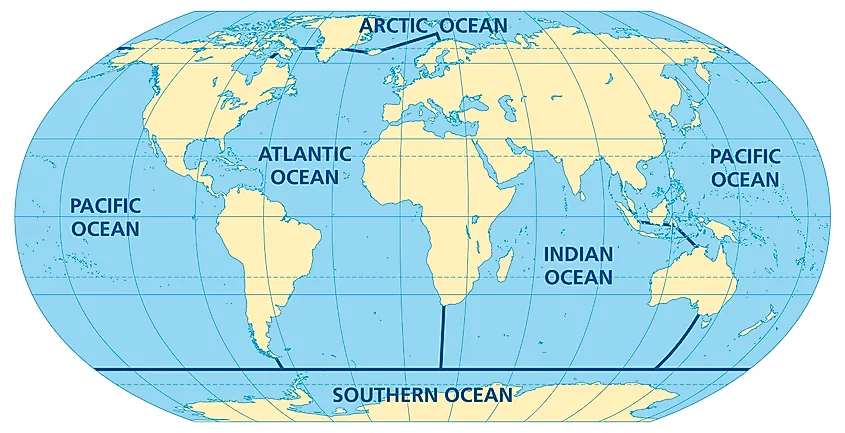What’s the average hourly pay in Mississippi? See how your check, work week compare – The Clarion-Ledger

Analysis of Labor Conditions in Mississippi in the Context of Sustainable Development Goals
A review of recent data from the Bureau of Labor Statistics (June 2025) indicates significant challenges for the state of Mississippi in achieving key Sustainable Development Goals (SDGs), particularly those related to poverty, decent work, and inequality.
SDG 8: Decent Work and Economic Growth
The data highlights a disconnect between working hours and fair compensation in Mississippi, posing a direct challenge to the principles of SDG 8, which promotes productive employment and decent work for all.
Wages and Economic Well-being
Mississippi reports the lowest average hourly pay in the United States, a critical barrier to economic growth and individual financial security.
- Average Hourly Wage: $27.95
- Average Weekly Earnings: Approximately $997.82
- Equivalent Annual Salary: Approximately $58,136
Working Hours
Compounding the issue of low wages, Mississippi workers record some of the longest average work weeks in the nation.
- Average Weekly Hours: 35.7 hours (Tied for 5th highest in the U.S. with Alabama)
- Jurisdictions with the Longest Work Weeks:
- District of Columbia: 36.6 hours
- Texas: 36.5 hours
- Louisiana & North Dakota (tie): 36.3 hours
SDG 10: Reduced Inequalities
The economic data reveals stark inequalities between Mississippi and other states, both nationally and regionally, undermining the objective of SDG 10.
National Pay Disparities
Mississippi’s position as the state with the lowest hourly pay underscores a significant national economic divide. In contrast, the highest-earning jurisdictions demonstrate a substantial wage gap.
- Lowest Paying States:
- Mississippi: $27.95
- New Mexico: $28.80
- Louisiana: $29.62
- Top 10 Highest Paying Jurisdictions:
- District of Columbia: $54.21
- Washington: $42.26
- Massachusetts: $42.00
- California: $41.22
- Colorado: $39.19
- Minnesota: $39.17
- New York: $39.14
- Connecticut: $38.98
- New Jersey: $37.87
- Hawaii: $37.62
Regional Economic Comparison (Southern States)
Within its own geographic region, Mississippi ranks last for average hourly wages, highlighting significant intra-regional inequality.
- Virginia: $36.49
- Georgia: $34.70
- Florida: $34.23
- North Carolina: $33.82
- South Carolina: $31.71
- Alabama: $31.34
- Tennessee: $30.87
- Kentucky: $29.94
- Louisiana: $29.62
- Mississippi: $27.95
SDG 1: No Poverty
The combination of the nation’s lowest wages and extensive working hours presents a formidable obstacle to poverty reduction efforts in Mississippi. These labor market conditions directly impact the ability of workers to achieve a decent standard of living, a core target of SDG 1.
Analysis of SDGs, Targets, and Indicators
1. Which SDGs are addressed or connected to the issues highlighted in the article?
The article discusses issues related to wages, working hours, and economic disparities between different US states, particularly focusing on Mississippi. Based on this content, the following Sustainable Development Goals (SDGs) are relevant:
- SDG 1: No Poverty: The article’s focus on Mississippi having the lowest average hourly pay in the nation ($27.95) directly connects to issues of income and potential poverty. Low wages impact the ability of individuals and families to afford a decent standard of living.
- SDG 8: Decent Work and Economic Growth: This is the most central SDG to the article. The text is built around data from the Bureau of Labor Statistics concerning “average hourly earnings,” “average weekly earnings,” and “average number of hours Americans work per week.” It explicitly discusses the quality of work by highlighting that Mississippi workers have “some of the longest work weeks in America for the lowest average hourly pay,” which is contrary to the principles of decent work.
- SDG 10: Reduced Inequalities: The article is fundamentally a comparison of economic conditions across different states. It highlights the significant inequality in hourly wages between states like the District of Columbia ($54.21) and Mississippi ($27.95). This demonstrates a clear geographical and economic inequality within the country.
2. What specific targets under those SDGs can be identified based on the article’s content?
Based on the issues discussed, the following specific targets can be identified:
- Under SDG 1 (No Poverty):
- Target 1.2: By 2030, reduce at least by half the proportion of men, women and children of all ages living in poverty in all its dimensions according to national definitions. The article’s emphasis on Mississippi having the lowest hourly pay and a weekly paycheck of about “$997.82” provides a direct link to the income dimension of poverty.
- Under SDG 8 (Decent Work and Economic Growth):
- Target 8.5: By 2030, achieve full and productive employment and decent work for all women and men… and equal pay for work of equal value. The article directly addresses this target by providing data on pay rates and working hours. The combination of long hours (35.7 per week) and low pay ($27.95 per hour) in Mississippi is a measure of the gap that needs to be closed to achieve “decent work.”
- Under SDG 10 (Reduced Inequalities):
- Target 10.1: By 2030, progressively achieve and sustain income growth of the bottom 40 per cent of the population at a rate higher than the national average. The article identifies Mississippi as the state with the “lowest hourly pay,” placing its workers at the bottom of the national income scale. The data presented serves as a baseline to measure progress towards this target.
3. Are there any indicators mentioned or implied in the article that can be used to measure progress towards the identified targets?
Yes, the article provides specific data points that serve as direct or implied indicators for measuring progress:
- For Target 8.5 (Decent Work and Equal Pay):
- Indicator 8.5.1 (Average hourly earnings…): The article explicitly provides the “average hourly earnings” for Mississippi ($27.95) and several other states. This is a direct measure used for this indicator.
- Average weekly hours: The article states that “Mississippi residents work 35.7 hours per week on average.” This data point, while not an official SDG indicator itself, is crucial for evaluating the “decent work” aspect of the target, particularly when juxtaposed with earnings.
- For Target 10.1 (Income Growth for the Bottom 40%):
- Indicator 10.1.1 (Growth rates of… income per capita…): The article provides the current income data necessary to calculate this indicator over time. The “average hourly pay” of $27.95 and the calculated “yearly salary of around $58,136” for Mississippi represent the income of the lowest-earning group on a state level, which is essential for tracking this indicator.
4. Summary Table of SDGs, Targets, and Indicators
| SDGs | Targets | Indicators (Mentioned or Implied in the Article) |
|---|---|---|
| SDG 1: No Poverty | 1.2: Reduce poverty in all its dimensions according to national definitions. | Implied through data on the lowest average hourly pay ($27.95) and weekly paycheck (about $997.82), which are measures of income relative to the cost of living. |
| SDG 8: Decent Work and Economic Growth | 8.5: Achieve full and productive employment and decent work for all, and equal pay for work of equal value. |
|
| SDG 10: Reduced Inequalities | 10.1: Sustain income growth of the bottom 40 per cent of the population at a rate higher than the national average. | Data on average hourly pay, which identifies Mississippi workers as the lowest-earning group on a state-by-state comparison, providing a baseline for measuring income growth. |
Source: clarionledger.com

What is Your Reaction?
 Like
0
Like
0
 Dislike
0
Dislike
0
 Love
0
Love
0
 Funny
0
Funny
0
 Angry
0
Angry
0
 Sad
0
Sad
0
 Wow
0
Wow
0

/sexual-and-reproductive-health-and-research-(srh)/contraception-and-fertility-care-(cfc)/mec-and-spr-launch.tmb-479v.jpg?sfvrsn=6f097e0d_2#)












































































